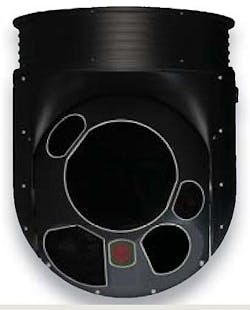Army asks industry about electro-optical imaging cameras for unpressurized aircraft sensor payloads
FORT BELVOIR, Va., 15 Aug. 2012. U.S. Army electro-optics experts are reaching out to industry to find companies capable of building mature and proven electro-optical imaging cameras that operate in unpressurized sensor payloads on manned surveillance aircraft.
Officials of the U.S. Army Night Vision and Electronic Sensors Directorate (NVESD) at Fort Belvoir, Va., have issued a request for information (solicitation number: W909MY-12-R-C051) entitled EO High Resolution Airborne Context Camera on behalf of Army's project manager for airborne reconnaissance and exploitation systems (PM ARES).
The Army is particularly interested in mature electro-optical imaging technology that can provide continuous sets of still-frame color imagery from a nadir-looking position in the unpressurized payload bay of a manned surveillance aircraft flying between 10,000 and 20,000 feet above the ground.
These kinds of cameras should be able to take images the ground with a ground sample distance (GSD) of no more than four to six feet at an altitude of 10,000 feet. The camera system should image a cross-track field of view of at least 28 degrees. In addition, the camera should provide geo-location metadata accurate to within 30 meters.
Army officials want cameras with automatic color balancing calibration to ensure color constancy between missions and between cameras, with real-time autofocus and automatic compensation for temperature, pressure, and altitude changes in flight.
Imaging systems also should offer full auto-exposure without external operator inputs via gain, integration time, and aperture control under lighting conditions ranging from bright sunlight through overcast, and over terrain ranging from cities, dense vegetation, deserts, or coastlines. Cameras should be able to store all captured imagery for missions lasting as long as four hours.
Cameras should come with proven strap-down mounting that resists the effects of passive vibration from the aircraft. Cameras not only should be fully developed and tested, but also have initial evaluation units ready for possible procurement, Army officials say.
Companies interested in making their abilities in electro-optics known should submit white papers no later than 3 Sept. 2012 with technology descriptions and specifications. E-mail white papers to the Army's Tamara Abdelmoty at [email protected] or Raymond Jones at [email protected]. Refer to RFI number W909MY-12-R-C051 in all communications.
More information is online at https://www.fbo.gov/notices/48bbce3240061ae1d309ce880f874bef
Follow Military & Aerospace Electronics and Avionics Intelligence news updates on Twitter
